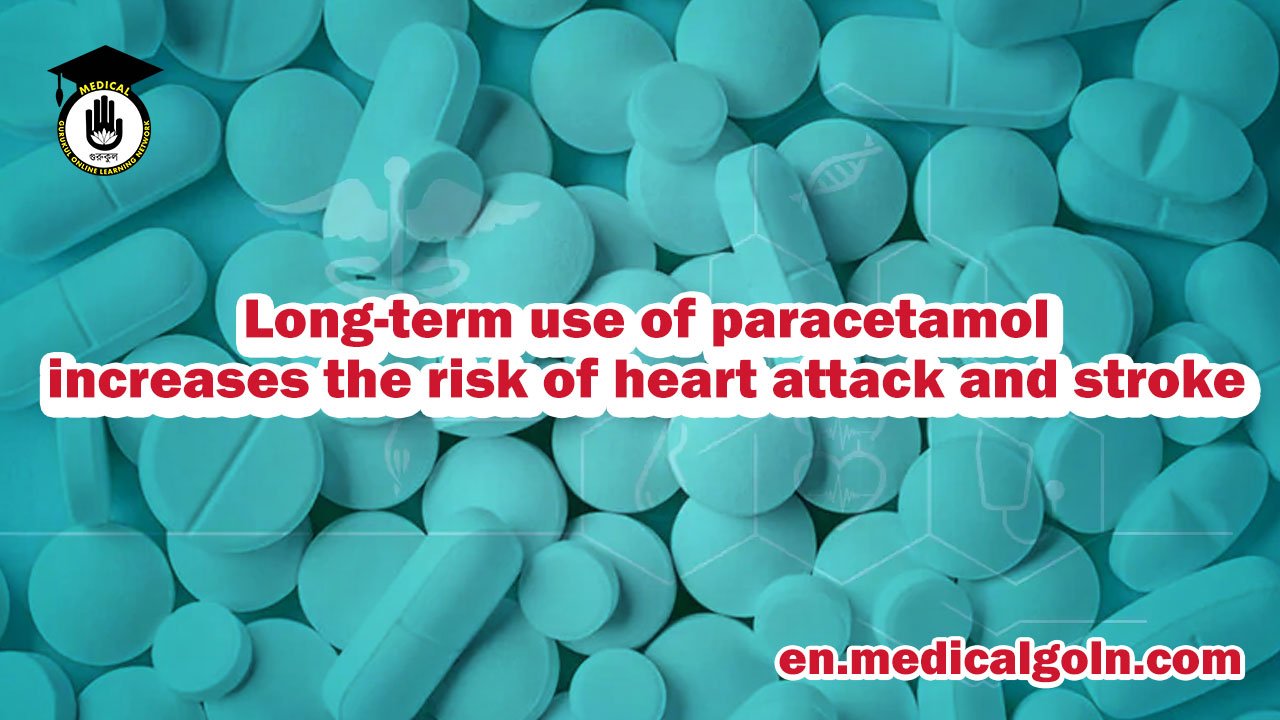Long-term use of paracetamol increases the risk of heart attack and stroke. Paracetamol, also known as acetaminophen, is one of the most commonly used over-the-counter pain relievers worldwide. Its widespread availability and reputation as a safe and effective medication for reducing fever and alleviating mild to moderate pain have made it a staple in many households. However, recent research has raised concerns about the long-term use of paracetamol, suggesting that it may increase the risk of serious cardiovascular events, such as heart attacks and strokes. This article explores the potential risks associated with prolonged paracetamol use and the implications for public health.
Long-term use of paracetamol increases the risk of heart attack and stroke
Understanding Paracetamol and Its Mechanism of Action
Paracetamol is widely used due to its effectiveness in treating a variety of conditions, including headaches, muscle aches, arthritis, back pain, toothaches, colds, and fevers. It is considered safer than other pain relievers like nonsteroidal anti-inflammatory drugs (NSAIDs), as it typically does not cause stomach irritation or increase the risk of gastrointestinal bleeding.
The exact mechanism of action of paracetamol is not fully understood, but it is believed to work by inhibiting the production of prostaglandins in the brain. Prostaglandins are chemicals that promote inflammation, pain, and fever. By reducing the production of these chemicals, paracetamol helps alleviate pain and reduce fever.

The Link Between Long-term Paracetamol Use and Cardiovascular Risk
While paracetamol is generally considered safe for short-term use, concerns have emerged regarding its potential risks when used over extended periods. Several studies have suggested a possible link between long-term use of paracetamol and an increased risk of cardiovascular events, including heart attacks and strokes.
1. Research Findings
A study published in the journal *Circulation* examined the potential cardiovascular risks associated with paracetamol use. The researchers found that individuals who used paracetamol regularly over a long period had a higher risk of developing high blood pressure, which is a significant risk factor for both heart attacks and strokes. The study suggested that the risk might be particularly pronounced in individuals who already have pre-existing cardiovascular conditions or are at higher risk due to factors like age, smoking, or obesity.
Another study published in *The Annals of the Rheumatic Diseases* focused on patients with osteoarthritis, a condition commonly treated with long-term paracetamol use. The researchers found that prolonged use of the drug was associated with an increased risk of heart attacks, strokes, and gastrointestinal complications, even though paracetamol is generally considered less risky than NSAIDs.
2. Possible Mechanisms
The potential mechanisms underlying the increased cardiovascular risk with long-term paracetamol use are not fully understood. However, some theories have been proposed:
– Impact on Blood Pressure: Paracetamol may affect blood pressure regulation, leading to an increase in blood pressure over time. Elevated blood pressure is a well-known risk factor for heart attacks and strokes.
– Oxidative Stress: Prolonged use of paracetamol may lead to increased oxidative stress in the body, which can contribute to the development of atherosclerosis—a condition characterized by the buildup of fatty deposits in the arteries. Atherosclerosis is a major cause of heart attacks and strokes.
– Altered Platelet Function: Some research suggests that paracetamol might affect platelet function, potentially leading to an increased risk of blood clots, which can trigger heart attacks and strokes.

Implications for Public Health
The potential link between long-term paracetamol use and an increased risk of cardiovascular events has significant implications for public health. Paracetamol is often recommended as a safer alternative to NSAIDs, particularly for individuals with existing cardiovascular risks. However, if the drug itself poses a risk when used long-term, this could lead to a re-evaluation of its safety profile, especially for chronic pain management.
1. Guidance for Healthcare Providers
Healthcare providers need to be aware of the potential risks associated with long-term paracetamol use, particularly in patients with pre-existing cardiovascular conditions or those at high risk of heart disease and stroke. It may be necessary to monitor these patients more closely for signs of cardiovascular issues and consider alternative pain management strategies.
2. Patient Education
Patients should be educated about the potential risks of long-term paracetamol use. While the drug is effective for short-term pain relief, individuals using it regularly over an extended period should be informed about the potential cardiovascular risks. Patients should be encouraged to discuss their pain management strategies with their healthcare providers, especially if they are taking paracetamol on a long-term basis.

3. Re-evaluating Pain Management Strategies
Given the potential risks, there may be a need to re-evaluate pain management strategies, particularly for chronic conditions like osteoarthritis. Alternatives to long-term paracetamol use could include physical therapy, lifestyle modifications, and the use of other medications with a lower cardiovascular risk profile. In some cases, non-pharmacological approaches to pain management, such as acupuncture or cognitive-behavioral therapy, may also be beneficial.
Paracetamol remains a widely used and effective medication for short-term pain relief and fever reduction. However, emerging evidence suggests that long-term use of the drug may increase the risk of serious cardiovascular events, including heart attacks and strokes. While further research is needed to fully understand the mechanisms behind this risk, healthcare providers and patients should be aware of the potential dangers associated with prolonged paracetamol use.
Patients using paracetamol for chronic pain management should be encouraged to consult with their healthcare providers to explore alternative treatment options and to ensure that their overall cardiovascular risk is being appropriately managed. As our understanding of the risks associated with long-term paracetamol use continues to evolve, it will be essential to balance the benefits of pain relief with the potential for harm, particularly in vulnerable populations.
Know more:
